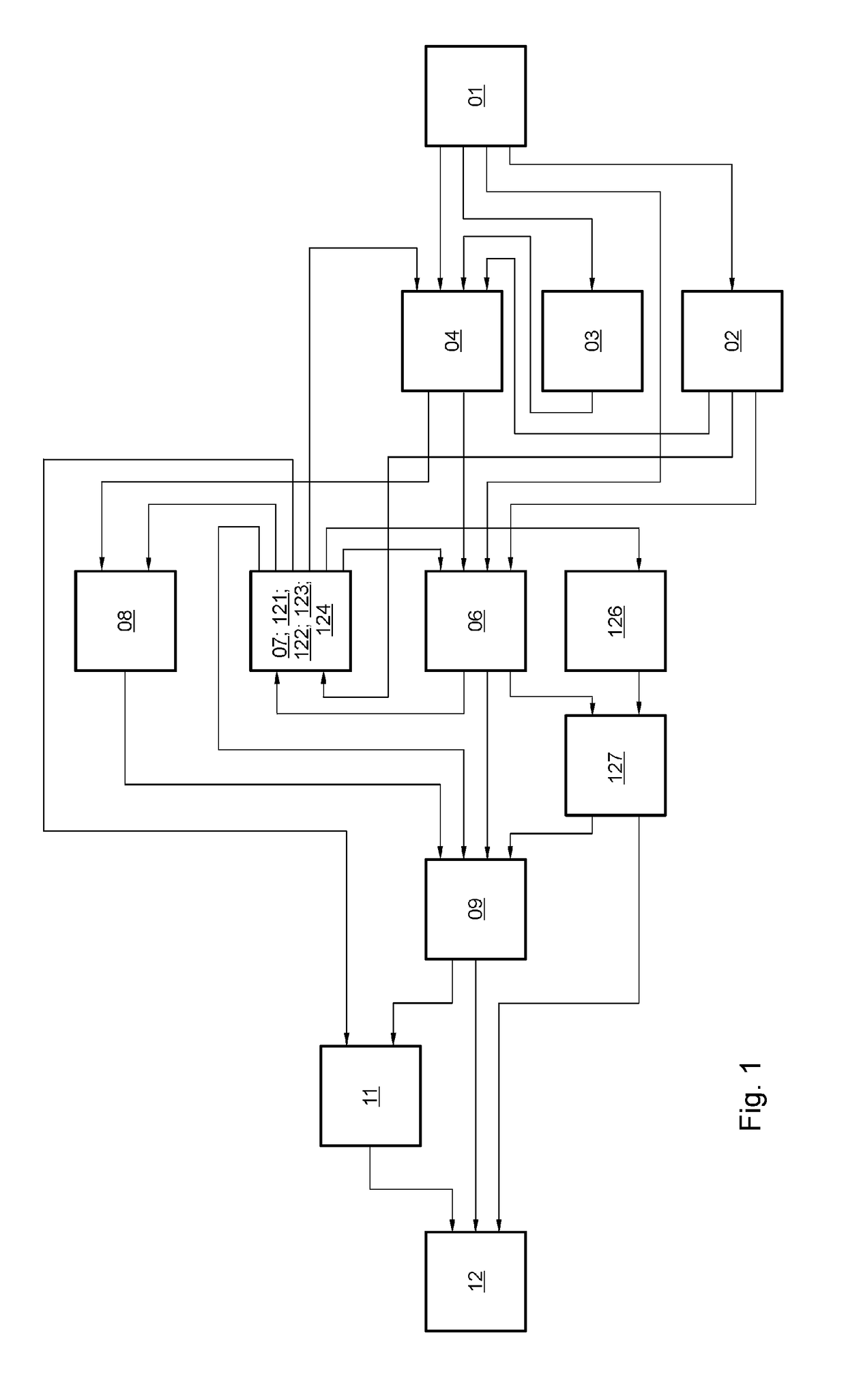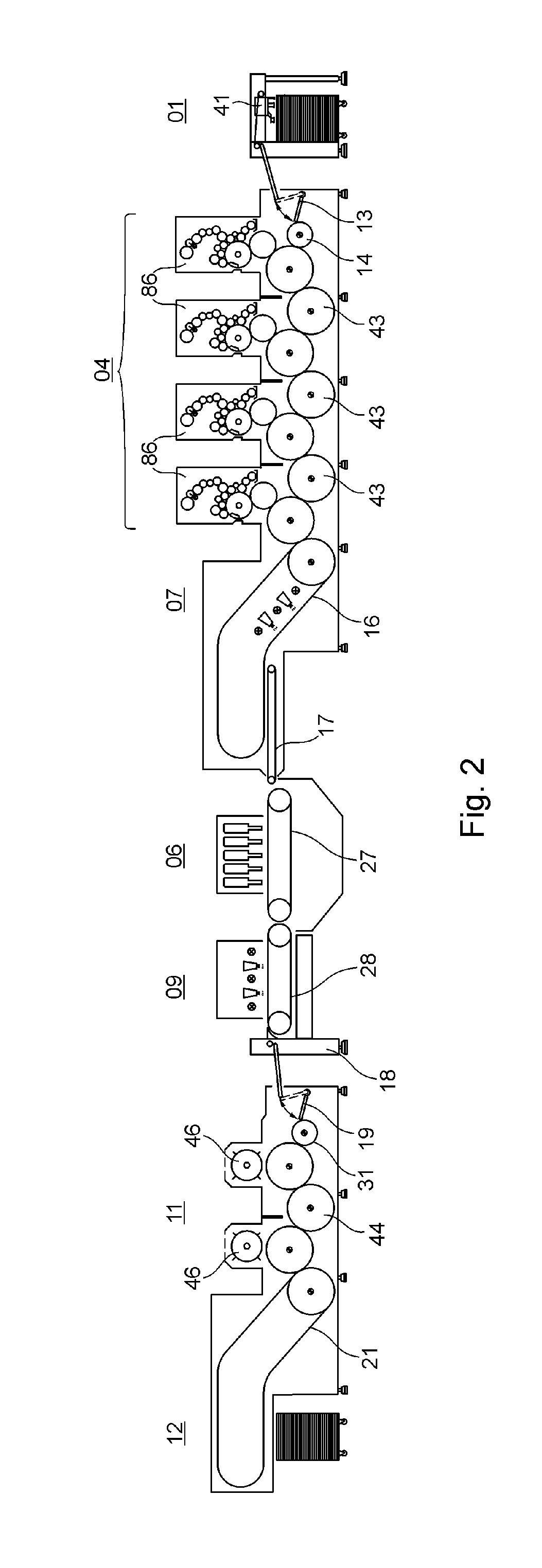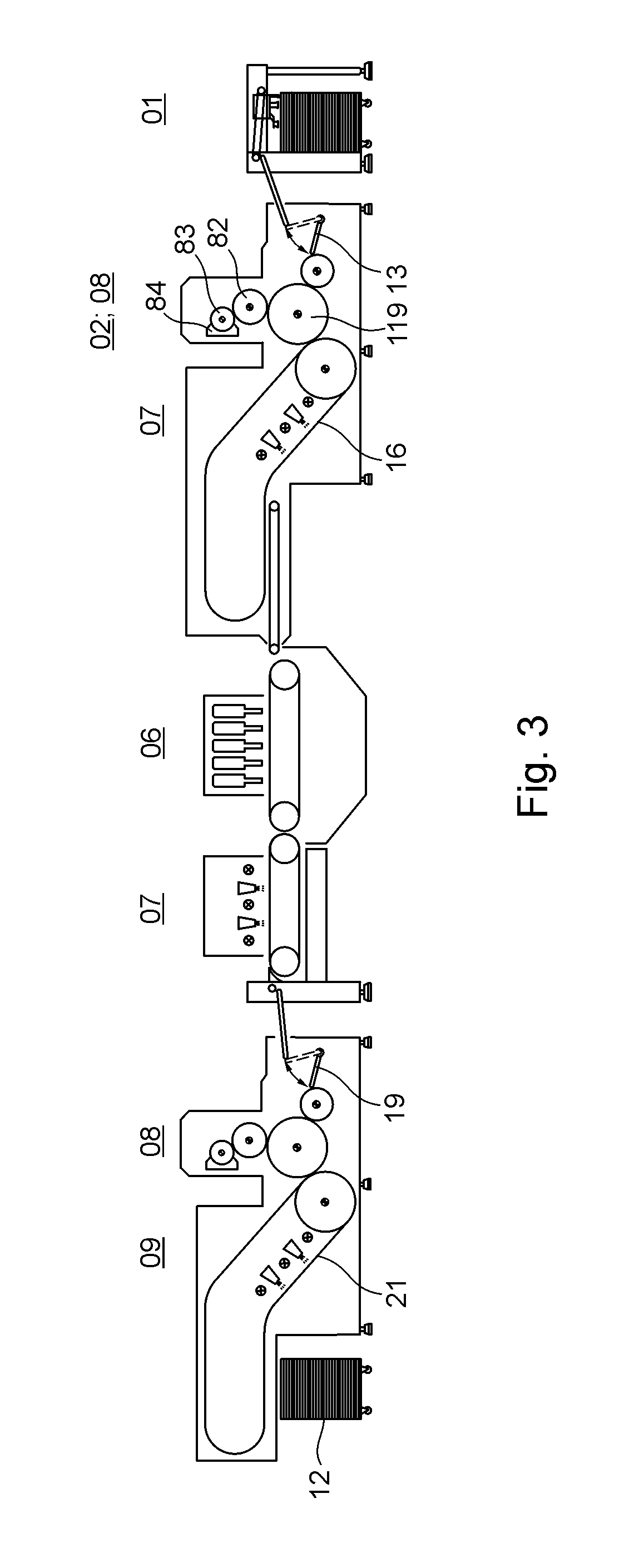Printing press assembly having a plurality of processing stations for processing sheets and method for operating the printing press assembly
a printing press and assembly technology, applied in the field of printing press assembly, can solve the problem that the level of register accuracy cannot be achieved with linear sheet transportation, and achieve the effect of flexible and efficient production of packaging materials, high productivity, and great positional toleran
- Summary
- Abstract
- Description
- Claims
- Application Information
AI Technical Summary
Benefits of technology
Problems solved by technology
Method used
Image
Examples
Embodiment Construction
[0045]FIG. 1 is a block diagram of various production lines, each of which can be implemented with a press assembly having, in particular, a plurality of different processing stations 01; 02; 03; 04; 06; 07; 08; 09; 11; 12 for processing at least one sheet-type substrate, in particular a printing substrate, preferably a particularly rectangular printing sheet, or sheet for short, said at least one substrate being rigid or flexible depending on the material, the material thickness, and / or the base weight. Each of these processing stations 01; 02; 03; 04; 06; 07; 08; 09; 11; 12 is preferably configured, e.g. as an independently functional module, a module typically being understood as a separately produced or at least individually assembled press unit or functional assembly. Each processing station 01; 02; 03; 04; 06; 07; 08; 09; 11; 12 located in a given press assembly is thus preferably manufactured independently, and its functioning can be tested, e.g. individually in a preferred e...
PUM
| Property | Measurement | Unit |
|---|---|---|
| radius | aaaaa | aaaaa |
| radius | aaaaa | aaaaa |
| distance | aaaaa | aaaaa |
Abstract
Description
Claims
Application Information
 Login to View More
Login to View More - R&D
- Intellectual Property
- Life Sciences
- Materials
- Tech Scout
- Unparalleled Data Quality
- Higher Quality Content
- 60% Fewer Hallucinations
Browse by: Latest US Patents, China's latest patents, Technical Efficacy Thesaurus, Application Domain, Technology Topic, Popular Technical Reports.
© 2025 PatSnap. All rights reserved.Legal|Privacy policy|Modern Slavery Act Transparency Statement|Sitemap|About US| Contact US: help@patsnap.com



